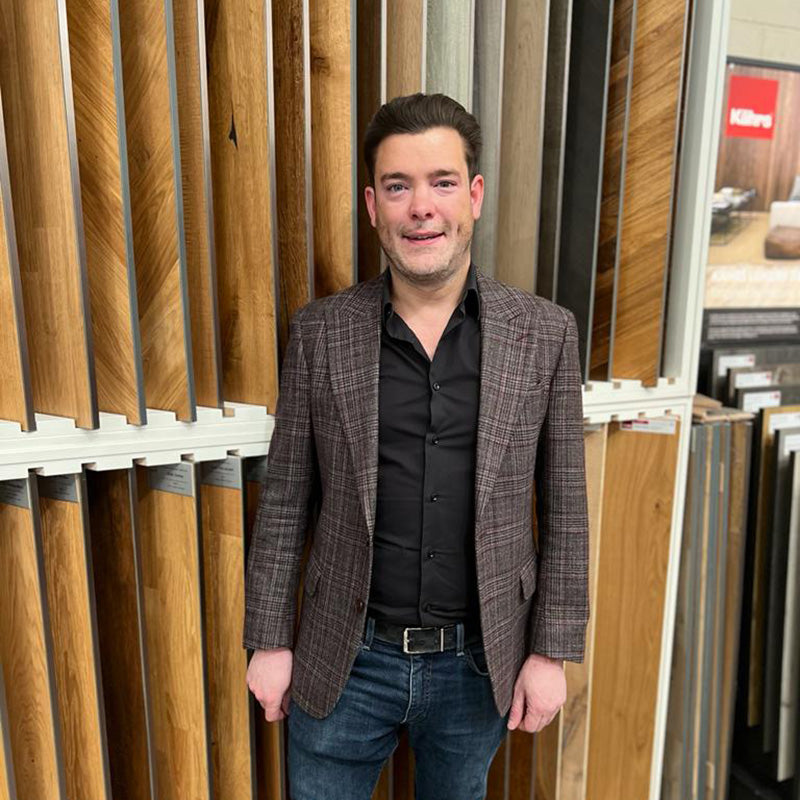Chevron VS Herringbone Flooring: What's The Difference?
When it comes to flooring, ‘chevron’ and ‘herringbone’ are two popular patterns that always come up. Both of them have a distinct look, but their similarities at first glance often leave homeowners comparing one against the other.
Choosing between the two is a tale as old as parquet flooring, but despite its difficulty, understanding the differences in style, cost, and installation can make your decision quicker and easier. So, that's exactly what we're explaining below.
What Is Chevron Flooring?
Chevron flooring is an immediately identifiable pattern - planks are cut at a 45°/60° angle and laid in a continuous "V" (chevron) shape, forming a bold and beautiful zigzag design. Simply put, if you see something that resembles the chevron road signs found on motorways, you're looking at chevron flooring.
The sleek, symmetrical look doesn't just bring a sense of elegance and sophistication to contemporary interiors, though; it also makes the room feel larger. Consider it an optical illusion, transforming smaller, narrower rooms into longer, more spacious spaces.
What Is Herringbone Flooring?
Herringbone flooring features rectangular planks (otherwise known as blocks) laid in a staggered zigzag pattern, it forms a broken "V" shape, creating a layered look instead of the symmetrical design afforded by chevron flooring.
This interlocking pattern has been used for centuries, giving it an unmistakable timeless appeal that suits both period and classic properties. But don't be fooled by its place in history's interiors — herringbone flooring's ability to effortlessly ooze sophistication ensures it looks anything but dated.
Key Differences Between Chevron and Herringbone Flooring
Even though herringbone and chevron are two parquetry styles, they're both unique designs (despite what a quick glance may tell you).
Perhaps the most obvious difference is appearance. As discussed, chevron flooring boasts an ultra-sharp, clean "V" shape, while herringbone displays a staggered zig-zag pattern. One offers bold symmetry that seemingly lengthens the room, while the other showcases traditional craftsmanship and historical architectural mastery.
That said, appearance isn't their only distinction. Other important differences include:
-
Installation difficulty — While both parquet styles are trickier to install than other types of engineered or solid wood flooring, chevron tends to be more complex, as one wrong placement breaks the symmetrical "V" shape and throws the whole pattern off. Herringbone flooring still requires skill (and the right tools) to install, but hiring a professional fitter isn't necessary.
-
Cost — In a similar vein, both herringbone and chevron flooring are often more expensive than other types of flooring.
-
Room impact — Chevron flooring has the ability to elongate modest bedrooms and cosy living areas. Herringbone, on the other hand, adds texture to the space.
-
Maintenance and wear — Herringbone and chevron flooring have similar durability. That said, wear may show up differently on each due to the pattern differences.
Which Flooring Is Best for You?
Ultimately, the best flooring for you matches your interior design preferences. However, it's important to consider the following factors when deciding which parquetry style is right for you:
-
Home style — Generally speaking, chevron flooring suits sleek, contemporary interiors, while herringbone works wonders in timeless, traditional spaces. Although, it isn't a crime to mix things up!
-
Borders — To border or not to border, that is the question. Borders prevent the pattern running to the edges of your room, adding a luxurious, bespoke finish to the design. There's no right or wrong answer to the border conundrum. But if you decide to add one to herringbone or chevron flooring, make sure it isn't too thick, as it will break up the pattern, be uneasy on the eye, and decrease the room size.
-
Budget — Both patterns are similar in price. However, chevron is often more expensive than herringbone, due to its precise angles and complexity. Cost is also dependent on the finish you choose (i.e., engineered wood, solid wood, etc.). Luckily, here at Stories, you can find a variety of high-quality, competitively priced finishes for both styles, ensuring you get the floor you desire at a price you can afford.
-
Installation — If you're no stranger to DIY, herringbone may be the best option for you. While skill is necessary, you don't need to worry about hiring a professional fitter. It's an experienced DIY-er's dream.
-
Room size — Herringbone's tighter pattern can make small rooms feel even smaller. Chevron's symmetrical V-shaped design, however, can elongate modest interiors, creating an illusion of space.
Chevron VS Herringbone Flooring
Despite their installation, room impact, wear, pattern, and cost differences, both chevron and herringbone floorings bring elegance to your space and even adds value to your property. We recommend choosing based on your home's style, personal interior design preferences, and budget. As long as you do that, you'll achieve the floor of your dreams without breaking the bank (or your back).
Explore our collection of Chevron or Herringbone flooring.

